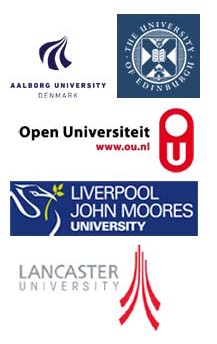

Design for networked learning: framing relations between participants' activities and the physical setting
Peter Goodyear, Lucila Carvalho, Centre for Research on Computer Supported Learning and Cognition, Faculty of Education and Social Work, University of Sydney
Nina Bonderup Dohn, Institute of Design and Communication, University of Southern Denmark.
This paper draws on a programme of research into the architecture of learning networks. This research programme has been examining a number of diverse learning networks, to identify reusable design ideas. The analytic work has been structured around a distinction between elements of learning networks that can be designed (partially, or completely) and processes that are emergent. From a learning perspective, the emergent processes are most important: what network participants actually do, including what they think, feel and say, is what matters most. Everything that can be designed and set in place is merely to resource and guide their activity. Thus, activity mediates between outcomes and what can be designed. One cannot assume a direct relationship between (say) a specific digital tool and some desired outcomes. Rather, one needs to understand the kinds of connections that can exist between such tools/devices and participants’ activities. More generally: how is what participants actually do influenced by the qualities of the place in which they are working, and by the tools and other resources that come to hand? Neither networked learning, nor the broader field of educational technology, have well-developed theories or constructs to create logical connections between activity and its physical setting. Our paper draws upon our experiences of analysing a dozen or so learning networks to create some framing within which such connecting constructs might be articulated. About the only theoretical construct that has become widely used in the field is that of “affordance”. It is a term that is also very widely critiqued and contested, in part because of deep conceptual ambiguities, but also because of lax usage. We draw upon some ideas from the philosophy of knowledge to help frame the relationships between the physical world and human activity, to redeem the term “affordance” and to add some further terms that help identify other kinds of relation between activity and its physical setting. The point of this is actually quite practical. Without some constructs that provide logical connections between things that can be designed and valued activities, designers cannot provide a rationale for what they do. They can copy ideas, set things in place, and proceed by trial and error. But they cannot apply principled knowledge to the solution of complex problems. They cannot design.
Keywords
Design; physical, material and digital contexts; activity; relational epistemology; affordances
| Invited Speakers | Community & Hot Seats| Past Conference Proceedings | Doctoral Consortium | Contact |